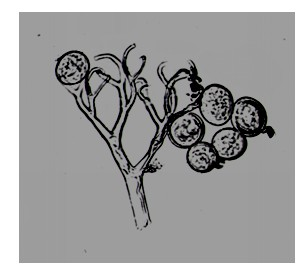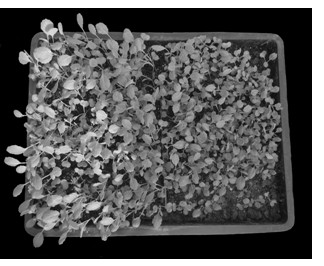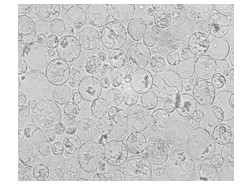Method for preparing novel downy-mildew-resistant common head cabbage germplasm through protoplast asymmetric fusion
A technology of protoplasts and cabbage, applied in the field of agricultural biotechnology engineering, can solve the problems of long cycle, difficult resistance gene technology, and sexual hybridization, and achieve the effect of overcoming hybrid incompatibility
- Summary
- Abstract
- Description
- Claims
- Application Information
AI Technical Summary
Problems solved by technology
Method used
Image
Examples
Embodiment 1
[0050] Firstly, it was determined that the susceptible downy mildew of cabbage was caused by cruciferous downy mildew, and the cruciferous downy mildew was collected from Jiangsu and Zhejiang provinces for identification. Simultaneously inoculate the different downy mildews collected on the disease-resistant Brussels sprouts material, and carry out resistance identification, and its specific method is as follows:
[0051] According to the disease symptoms of natural diseased cabbage materials in Yixing, Taizhou, Nanjing, Hangzhou and Haining, Zhejiang, and the fresh diseased leaves were treated and cultivated, a large amount of moldy mold layer was found on the back of the leaves, and the surface was observed under a microscope. Pathogen identification: cyst peduncles are solitary or in clusters, colorless, without septa, the base of the main branch is slightly enlarged, repeated dichotomous branches, 4 to 8 dichotomous acute-angled branches at the top, and small stalks at the ...
Embodiment 2
[0054] The present invention relates to asymmetric fusion of protoplasts. Firstly, the hypocotyl protoplasts of the recipient downy mildew-resistant Brussels sprouts and the mesophyll protoplasts of the downy mildew-resistant Brussels sprouts were obtained, and the isolation and purification of the hypocotyls and mesophyll protoplasts of Brassica plants established in this laboratory Methods to obtain pure protoplasts. Then utilize UV rays to process donor mesophyll protoplasts, the specific steps are as follows:
[0055] 1. Isolation and purification of head cabbage hypocotyl protoplasts: using head cabbage with excellent economic and agronomic traits bred by Jiangsu Academy of Agricultural Sciences as the recipient, the seeds of this variety were surface-sterilized with 70% ethanol for 30 s, and then With 0.1%HgCI 2 Sterilize the solution for 15 minutes, rinse with sterile water for 3 to 5 times, blot dry the filter paper, inoculate on the hormone-free MS basic medium fo...
Embodiment 3
[0059] The fusion of asymmetric protoplasts involved in the present invention adopts polyethylene glycol (PEG) fusion method, and the steps are as follows: adjust the protoplast concentrations of the donor Brussels sprouts and the acceptor Brussels sprouts to 2×10 respectively with the pre-fusion solution. 6 ·mL -1 , mixed uniformly at a ratio of 1:1 to obtain a protoplast suspension. Evenly distribute 7 drops of mixed protoplast solution in a sterile petri dish with a diameter of 6 cm, 40 μL per drop, and let it stand still for 10 min to make the protoplasts settle on the bottom of the petri dish, then add 60 μL containing 40 % polyethylene glycol (PEG1450) fusion solution, stand still for 5 min to promote the fusion of protoplasts, slightly tilt the culture dish, absorb the mixture in the culture dish along the edge of the protoplast suspension, then carefully add 2 mL PEG cleaning solution Ⅰ After 5 minutes of resting, suck it off, then carefully add 2 mL of PEG cleaning s...
PUM
| Property | Measurement | Unit |
|---|---|---|
| pore size | aaaaa | aaaaa |
Abstract
Description
Claims
Application Information
 Login to View More
Login to View More - R&D
- Intellectual Property
- Life Sciences
- Materials
- Tech Scout
- Unparalleled Data Quality
- Higher Quality Content
- 60% Fewer Hallucinations
Browse by: Latest US Patents, China's latest patents, Technical Efficacy Thesaurus, Application Domain, Technology Topic, Popular Technical Reports.
© 2025 PatSnap. All rights reserved.Legal|Privacy policy|Modern Slavery Act Transparency Statement|Sitemap|About US| Contact US: help@patsnap.com



